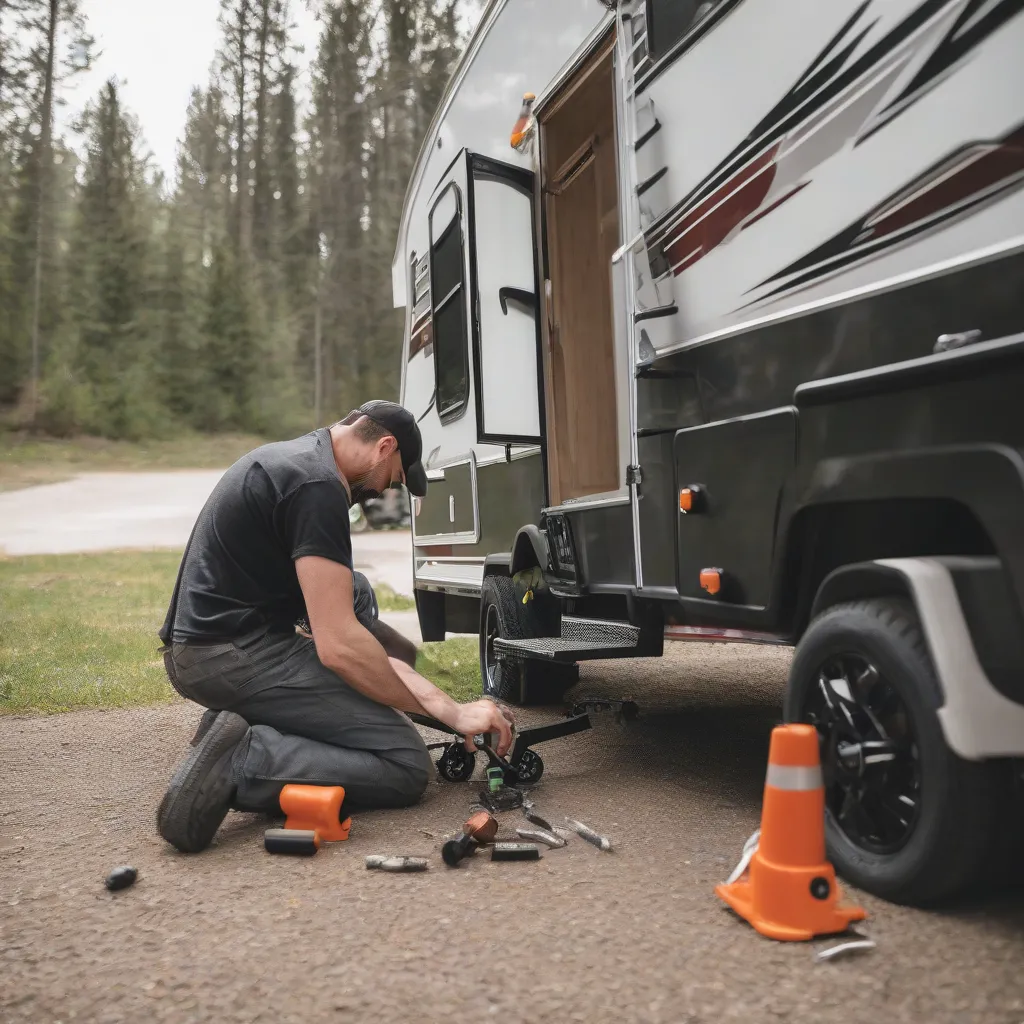“Adventure awaits,” they say, and as any seasoned traveler knows, a smooth journey is key to unlocking the full potential of your adventures. This rings especially true when towing a travel trailer, where a bumpy ride can quickly turn those dreams of exploring Yosemite into a stressful ordeal. One crucial factor in achieving that smooth, safe tow is properly adjusting your sway bars.
Imagine this: you’re cruising down the Pacific Coast Highway, the California sun warming your face, the wind in your hair. Suddenly, a gust of wind rocks your trailer, and you feel the dreaded sway start to take hold. Scary, right? That’s where sway bars come in. They’re like the unsung heroes of your towing setup, working behind the scenes to combat that side-to-side motion and keep your trailer stable.
Understanding Sway Bars and Why They Matter
Before we dive into the “how-to,” let’s take a quick detour to understand why adjusting your sway bars is so important. Think of them as the stabilizers on a bicycle – they help prevent tipping and keep you upright. Similarly, sway bars on your travel trailer counteract the forces that cause it to sway, like wind gusts, passing trucks, or uneven roads. A properly adjusted sway bar system can be the difference between a white-knuckle drive and a comfortable, enjoyable journey.
A Step-by-Step Guide to Adjusting Sway Bars
Adjusting your sway bars might seem intimidating at first, but fear not! With a little know-how and these easy-to-follow steps, you’ll be a pro in no time:
1. Gather Your Tools and Safety Gear
Before you begin, it’s crucial to have the right tools and prioritize safety. You’ll need:
- A torque wrench
- Socket set
- Work gloves
- Safety glasses
- Leveling blocks (optional)
Safety First: Always wear gloves and safety glasses when working under your trailer, and ensure it’s properly secured on a level surface.
2. Park on a Level Surface
Find a flat, level surface to park your trailer. This will ensure accurate adjustments and prevent the trailer from rolling while you’re working. If you need a little help, leveling blocks are your best friend.
3. Identify Your Sway Bar System
Most travel trailers utilize either a friction or weight distribution hitch with integrated sway control. Familiarize yourself with your specific system – refer to your owner’s manual or consult the manufacturer’s website.
4. Adjust the Tension
For Friction Sway Control: Loosen the clamping bolts on the sway control arm slightly. Then, rotate the adjustment nut to increase or decrease tension.
For Weight Distribution Hitch with Sway Control: Consult your owner’s manual for specific instructions, as adjustment methods vary.
5. Test the Adjustment
Once you’ve made the adjustments, hitch up your trailer and take it for a test drive at low speeds in a safe, open area. Pay close attention to how the trailer handles around corners and in response to wind gusts.
6. Fine-Tune as Needed
Don’t be afraid to fine-tune your adjustments until you achieve the desired stability. Remember, every trailer and towing setup is unique, so finding the sweet spot might take a few tries.
 Adjusting Travel Trailer Sway Bar
Adjusting Travel Trailer Sway Bar
Common Questions About Sway Bar Adjustments
Q: How do I know if my sway bars are too loose or too tight?
A: If they’re too loose, you’ll experience excessive swaying, especially in windy conditions or when being passed by larger vehicles. If they’re too tight, you’ll notice reduced responsiveness when turning and potential strain on your tow vehicle.
Q: How often should I adjust my sway bars?
A: It’s a good practice to check their adjustment before each trip, especially if you’ve made changes to your trailer’s load or are traveling in different weather conditions.
Q: Can I adjust the sway bars myself, or should I take it to a professional?
A: While adjusting sway bars is generally considered a DIY-friendly task, don’t hesitate to seek professional help if you’re unsure or uncomfortable with the process. A qualified RV technician can ensure proper adjustment for your specific setup.
Hit the Road with Confidence
Just like finding the perfect campsite requires a bit of planning and preparation, so does ensuring a smooth and safe towing experience. By taking the time to understand and properly adjust your sway bars, you’re not just enhancing your trailer’s stability – you’re investing in peace of mind and a more enjoyable journey.
Speaking of journeys, if you’re seeking inspiration for your next adventure, be sure to check out our other articles on How to Hook Up Travel Trailer Sway Bars and When Travelling at a Safe Speed on an Expressway. From the winding roads of Big Sur to the vast plains of Montana, let Travelcar.edu.vn be your guide to navigating the open road with confidence.
 Travel Trailer on Open Road
Travel Trailer on Open Road
Now, go forth and explore!